The original Sonic the Hedgehog game was released in June of 1991. Since then, Sega has not only continuously released games focused on the Blue Blur, but has also collaborated with comic book publishers and animation studios to bring Sonic into other comics and cartoons. In a previous post, I went over Sonic cartoons and comics from the 1990s. It was a decade filled with silly antics, touching drama and complex lore, sometimes all within the same show or book. Now, let’s take a look at how the last 20 years of comics and cartoons have handled our favorite hedgehog.
Sonic X (2003-2005)
The 90s were the decade of North American-produced Sonic cartoons, with three separate shows produced by DIC. The 00s, however, saw the first long-running Sonic anime come out of Japan.
Sonic X was produced by TMS Entertainment, a studio most famous for its numerous anime adaptations of Lupin the Third. Country of origin isn’t the only way Sonic X differs from its predecessors, though. For one, this is the first media outside of video games to refer to Robotnik by his Japanese moniker, “Dr. Eggman.” This is indicative of a big change in the Sonic franchise during the 00s, during which the Sega Corporation started taking tighter control over spin-off media and localizations.
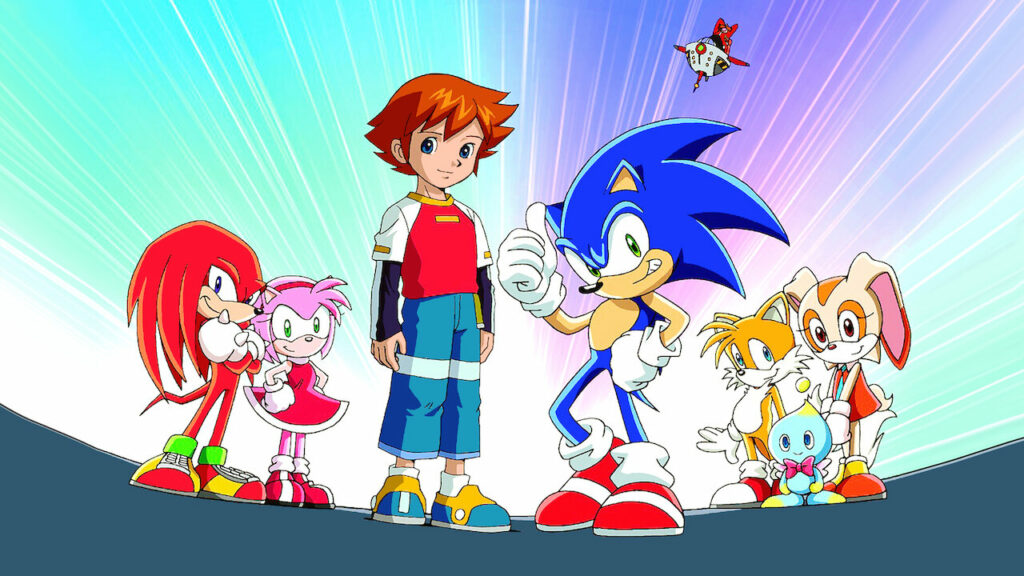
In the 90s, Sega of America, DIC and Archie Comics had little oversight from Sega Corporation in what they did with Sonic and his friends. In the 00s, that was no longer the case. As a result, Robotnik’s name was changed to be consistent across regions, Sonic’s homeworld no longer had a name, and none of the characters from the DIC produced cartoons have been carried over to any other media since Archie Sonic was canceled in 2016.
Not only does Sonic’s world go unnamed, but most of Sonic X doesn’t even take place there. We instead find Sonic and friends (and foes) transported to Earth, where they encounter Chris Thorndyke, a wealthy but lonely young boy. Yes, before the Paramount films partnered Sonic with a human, Sonic X had Sonic and friends living in the Thorndyke family mansion.
The Chaos Emeralds come along for the ride, so Sonic and his friends seek the Emeralds as a means to return home. Eggman, of course, seeks the same Emeralds to conquer the world.
Last time I talked about how Adventures of Sonic the Hedgehog and Sonic the Hedgehog (known to fans as Sonic SatAM) represented the two extremes of Sonic stories, with the former being exceedingly silly, while the later was a serious drama. Sonic X strikes a balance between those extremes. The overarching story is quite dramatic, but there are lots of little fun episodes strewn throughout, like Sonic desperately trying to escape a cruise in the middle of the ocean.
The second season of Sonic X adapts the stories of Sonic Adventure and Sonic Adventure 2, and does an admirable job of it. Though the story has to incorporate Chris and his friends, who were not there in the video games, their inclusion adds rather than subtracts.
In regard to Sonic X’s place in Sonic history, the English language version of Sonic X brought in a whole new cast who would, in turn, go on to reprise their roles in several video games. Jason Griffith voiced Sonic in all media until 2010, while Mike Pollock has voiced Eggman in every subsequent video game and cartoon for nearly 20 years (with a single exception we’ll be discussing later).
Equally notable is the theme song, which introduced the “gotta go fast” tagline that many have glommed onto as a way to quickly and concisely summarize Sonic as both a franchise and a character.
Overall, Sonic X is a fun series and an interesting piece of Sonic history. The latter would be reason enough for anyone interested in Sonic to give it a look, but the drama and humor of the show stand on their own merits, as well.
Sonic Boom (2014-2017)
Sonic Boom was introduced as a spin-off franchise including three video games and a cartoon. The cartoon consists of 11-minute shorts focused on the sitcom-esque shenanigans of a radically redesigned Sonic and friends along with a brand new character, Sticks the Badger.
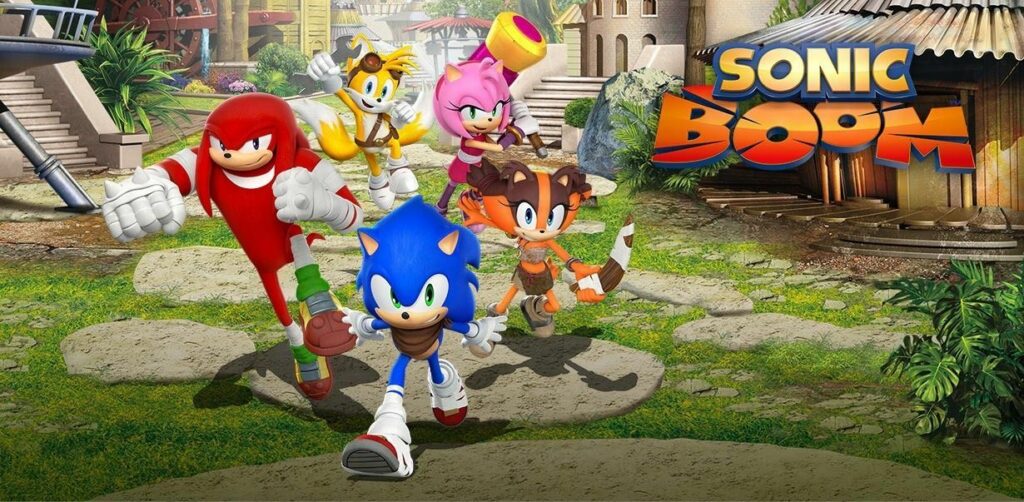
There isn’t a lot to explain beyond that premise, but this series had a significant impact on Sonic’s history, so I want to focus on that for a moment.
This is the cartoon debut of Roger Craig Smith, who started voicing Sonic in the video games from 2010 onward. For an entire generation of Sonic fans, Smith has been the voice of Sonic. His deeper voice is a noticeable divergence from what came before, which was quite jarring for older fans like myself. Even so, his performance has grown on me over time. He’s clearly a skilled actor, and for younger fans he’s undeniably the voice of Sonic.
Other notable voice cast include Colleen O’Shaughnessey, who debuts as Miles “Tails” Prower in this very cartoon. Like Smith, O’Shaughnessey has gone on to voice Tails in most Sonic material, but with the added privilege of voicing Tails in the Paramount films as well. As a fan of both her portrayal of Tails and her voice work in anime such as Naruto and Violet Evergarden, I cannot tell you how much I geeked out over seeing her name on a movie poster.
The one who steals the show, in my opinion, is Travis Willingham as Knuckles, whom he also voices in the games. Critical Role and Fullmetal Alchemist fans will likely recognize Willingham’s name, and his performance as Knuckles is hands-down the funniest thing in Sonic Boom.
In this series, certain traits of the characters are exaggerated for comedic effect. Tails’ status as a boy genius is used as an excuse to make him spout technobabble, Amy Rose’s crush on Sonic is transformed into a bickering situationship between the two (easily the second funniest thing in the show) and Knuckle’s gullibility in the original canon is reinterpreted as him being a dimwit who occasionally makes brilliant observations.
Knuckles has a ton of amazing one-liners in this cartoon, some of which seem intended to go over the heads of children and aim for the adults in the audience, albeit not in a risque fashion like in the Shrek movies. Think more along the lines of the Dr. Doofenshmirtz portion of every Phineas and Ferb episode, where the show jokes about the doctor’s divorce and other struggles with adult life.
Sonic Boom is a silly cartoon in a similar vein to its predecessor, Adventures of Sonic the Hedgehog, albeit with a sitcom twist. Adults might find the sitcom clichés a little tiring, but these clichés will be fresh to a younger audience, and every episode has at least one really good one-liner. All of these shows and comics can be enjoyed by the whole family, but if finding something the family can watch together as a group is your top priority, then this is probably the first title you should pick up.
Sonic the Hedgehog (IDW Publishing, 2018-Present)
This spiritual successor to Sonic the Hedgehog published by Archie Comics sees Ian Flynn returning as head writer, with art contributions from the likes of Tyson Hesse, who has served as animation director on several promotional shorts for Sonic video games. The art and writing contributors to IDW Sonic are a collection of Sonic fans who have worked extensively with the character in both official publications and fan-made projects.
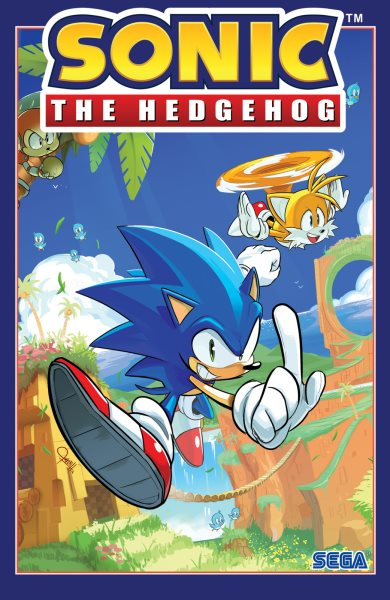
The love for Sonic and his friends practically radiates from the page, with bright colors, expressive art and compelling characterization that gets to the core of these seemingly simple characters.
The comic picks up after the video game Sonic Forces. In Sonic Forces, Eggman had all but won and conquered the world. The game, of course, ends with Eggman’s defeat, and so IDW Sonic follows the Blue Blur and his friends as they clean up the mess he made.
Like its predecessor from Archie Comics, Sonic, IDW Sonic does an amazing job of conveying the seriousness of what Eggman has done to the population in a way that’s appropriate for a tween audience. It’s clear that Eggman’s conquest caused many casualties, and this is conveyed without showing an ounce of gore or a drop of blood. Scenes with helmets strewn about or showcasing the devastation done to the land convey the violence enacted by Eggman’s forces. It’s the sort of approach where, as a child, you understand that Eggman is a bad man who has done bad things, and as you grow, you find yourself able to understand more and more of the implications. This is a needle that’s not necessarily easy to thread, and the creative team does it masterfully.
Eggman’s characterization is fascinating in this comic, as he has the goofy, childish persona that has become the default of the character over the last decade, while incorporating the darker elements of his SatAM interpretation. The contrast between childlike joy and abject cruelty makes this version of Eggman one of the most intimidating takes on the character.
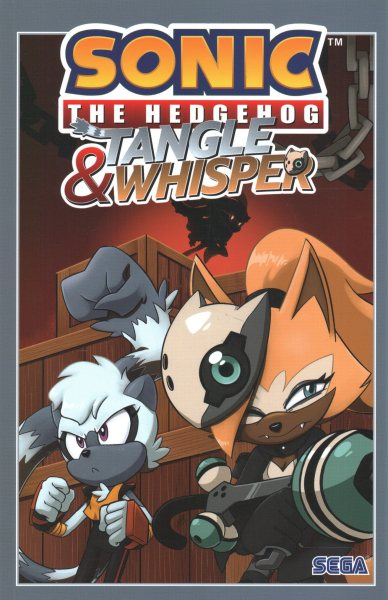
In addition to new villains like Doctor Starline and Mimic, IDW also introduces new allies to Sonic. Tangle the Lemur and Whisper the Wolf (my second favorite Sonic character) make their debut here and even have their own spin-off title, Tangle & Whisper.
While I do miss the old SatAM gang, the new characters introduced in IDW Sonic are a colorful cast of characters who complement one another well, such as Tangle’s friendly and extroverted energy playing off of Whisper’s introverted nature. These new characters make Sonic’s world feel bigger and more alive, while the story still gives due respect to the video game characters you know and love.
This comic also expands on that video game cast in interesting ways. Of particular note is Amy Rose, the pink hedgehog with a crush on our hero. Modern Sonic media has tried to expand Amy’s role outside of her initial schtick of chasing Sonic to the ends of the Earth (or, rather, Sonic’s nameless planet). The IDW comics have been a big part of that push to expand Amy’s character.
In the IDW comics, Amy is the leader of the Restoration, which rose out of the Resistance from Sonic Forces. As the name implies, the Restoration takes on the task of rebuilding their world following Eggman’s reign of terror.
It’s a lot of responsibility for a girl whose only prior commitment was to chase and fawn over her crush, and the reader is witness to how the stress and frustration of it all affects her. However, as a result of her hard work, this version of Amy receives a lot more respect from her peers than previous iterations. Even her relationship with Sonic comes across less like a childish, unrequited crush and more like an “it’s complicated” situationship. It’s a compelling take on the character that is still recognizably, undeniably, Amy Rose.
IDW Sonic is one of my favorite pieces of Sonic media and a worthy successor to Archie Comics’ interpretation of our beloved hedgehog. Like its predecessor, it takes these cute cartoon critters deathly seriously while still having the laid-back charm of Sonic as a character. It knows when it needs to be funny, and it knows when it needs to be serious, and it executes both amazingly well.
IDW’s Sonic the Hedgehog and it’s spin-offs are a great read for tweens and teens and, while I’ve already talked a lot about how adults can enjoy these shows and comics as well, this would likely be the number one piece of Sonic media I would recommend to adults who just want something they can personally enjoy.
Sonic Prime (2022-2024)
And we finish off with what is currently the latest Sonic cartoon. Produced by Netflix Animation and WildBrain Studios, this is the first ever Canadian-produced Sonic cartoon.
Sonic Prime introduces a new powerful gem, the Paradox Crystal. When this crystal is shattered during a fight with Eggman, Sonic is yeeted through the multiverse, where he meets alternate versions of his friends. Every world is different, but they all have one thing in common: There is no Sonic.
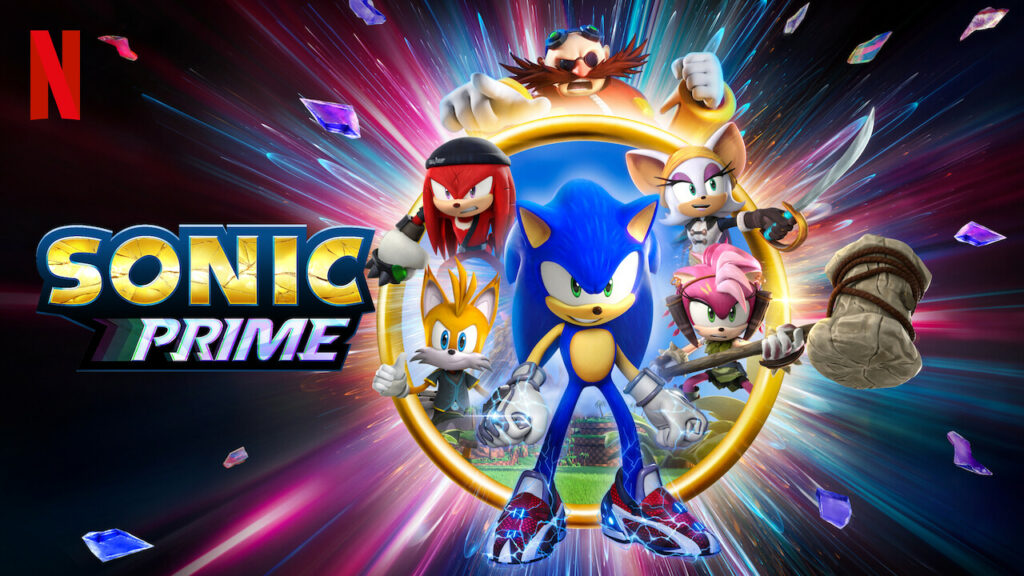
The impact of a Sonic-less universe is where much of the drama and tension of the story derive, as the lives of Sonic’s friends are demonstrably worse due to his absence. That friendship is the central theme of the story and, while friendship is a common theme throughout the franchise, the multiverse angle allows Sonic Prime to examine those friendships in new and interesting ways.
While the above elements provide a good bit of drama and there’s plenty of humor for levity, there’s also a great deal of action. I’m even tempted to say that this is the most action-packed cartoon of all the ones I’ve discussed in these two posts. Well-choreographed and engaging fight scenes pop up every few minutes, and a lot of these scenes do a good job of moving the plot along, making for an efficient use of screen time.
The 3D animation is highly expressive, which elevates every other element of the story. The environmental details are equally impressive, with Green Hill Zone lovingly reimagined as an island that has all the paths and loop-de-loops of the video game levels, but also looks like a place where creatures could actually live. I don’t think I’ve seen another piece of Sonic media thread that particular needle as well as Sonic Prime does.
All of this is further enhanced by a cast of voice-acting veterans. Due to Canadian law, most of the cast and crew of any show produced in Canada has to have a predominantly Canadian cast and crew. So we have a whole new vocal cast for Sonic Prime, but unlike previous casting changes, this likely doesn’t mark a shift in vocal performances going forward, which is actually pretty cool because it adds to Sonic Prime‘s uniqueness. Unless WildBrain Studios makes another cartoon, you’re only going to hear these performances in Sonic Prime, and they’re totally performances worth hearing.
It will be awhile before we know what Sonic Prime’s impact on the history of Sonic will be. Until then, I can at least say that this is an entertaining show that’s just as worthy of your attention as everything else I’ve talked about. And I do hope that I’ve convinced you that these shows and comics are worth your time. Kids always benefit when the adults in their lives take part in their interests, and Sonic provides so many stories that adults and children can enjoy together. That’s what’s so awesome about Sonic the Hedgehog.
Sonic the Hedgehog is a media franchise that can be as deep or as silly as you need it to be. Sonic can be a friend, a freedom fighter, a prince seeking to reclaim his throne, a fugitive on the run or the dead body in a murder mystery (yes, seriously). He can also just be a rad 90s dude who drives Robuttnik up a wall. He can be anything for as long as writers, game developers and artists are willing to take him in wild new directions. And given the size of Sonic’s fanbase, I don’t think we’re gonna run out of weird and wonderful ideas of what to do with the little blue dude anytime soon.
